$49.97 Original price was: $49.97.$34.98Current price is: $34.98.
SKU: D2LSC 3615985397 Categories: Clematis Vines, HOT SALE
- Free Shipping Worldwide
- Multiple payment options for secure shopping with SSL
- The best quality products, always.
- Multiple payment methods, safe and reliable

Mrs. Cholmondeley Clematis
Clematis ‘Mrs. Cholmondeley’
Plant Details
USDA Plant Hardiness Zones: 4a-9b Find Your Zone
Plant Type: Flowering Vine
Height or Length at Maturity: 10 to 12′
Width at Maturity: 3-4′
Spacing: 2-3′ apart to cover fences and walls
Spacing: 2-3′ apart to cover fences and walls
Growth Habit / Form: Climbing, Dense, Twining, Twisted Branching
Growth Rate: Moderate to Fast
Flower Color: Pastel Blue and Lavender shades
Flower Type: Single
Flower Size: 6-8″
Flowering Period: Late Spring to Early Summer reblooming in Late Summer to Early Fall
Flowering Period: Late Spring to Early Summer reblooming in Late Summer to Early Fall
Fragrant Flowers: No
Foliage Color: Dark Green
Fragrant Foliage: No
Sun Needs: Full to Mostly Sun, Part Shade, All Day Lightly Filtered Sun
Water Needs: Average
Soil Type: Clay (Amend heavy clay soil to ensure good drainage), Loam, Sandy, Silt
Soil Drainage: Moist but Well Drained
Soil pH: 5.5 – 7.0
Maintenance / Care: Low
Pruning Group: 2
Attracts: Butterflies, Hummingbirds, Beneficial Pollinators, Visual Attention
Resistances: Deer, Disease, Heat, Humidity, Insect, Black Walnut
Description
One of the first blue Clematis varieties that was introduced in 1873, ‘Mrs. Cholmondeley’ boasts large and extremely showy 6 to 8 inch star shaped flowers with petals in shades of pastel blue and lavender. The first bloom cycle occurs in late spring to early summer and is followed by a second cycle in late summer to early fall. The flowers of this beauty are great for cutting and use in floral arrangements. Mrs.Cholmondeley was duly honored with the prestigious Award of Garden Merit by the Royal Horticultural Society.
Landscape & Garden Uses
Climbing to about 10 to 12 feet high and spreading 3 to 4 feet wide, the Mrs. Cholmondeley Clematis is ideal for growing on trellises, mailbox post, obelisks, and other structures. Excellent in pots, planters and other containers for situating on patios, decks and around other outdoor living spaces where the amazing flowers can be viewed from close up. A fine addition to Clematis gardens, blue theme gardens and cottage gardens.
Suggested Spacing: 9 feet apart to cover fences, trellises, and walls
Growing Preferences
This Clematis is easy to grow in a moist but well-drained soil of average fertility and full sun to part shade. Though it tolerates dry periods when established, it will appreciate an occasional watering in prolonged periods of dry weather. Make sure not to plant this one too deep as it tends to smother the plant. See pruning instructions just below.
Clematis Pruning Group 2
Clematis in Group 2 consist of all the early, large-flowered hybrid clematis that bloom in late spring or early summer and maybe again in late summer. Clematis in this group should be pruned lightly in late winter or early spring. Pruning consists of removing weak and crossing shoots then thinning down the plant to a structure of evenly spaced one and two year old stems. Cut each stem just above a pair of healthy buds. Plants in this group have the tendency to become bare at the base as they mature. You can under-plant with small shrubs or perennials to help conceal the bare stems. Alternatively, you can often force a flush of new growth from the base by cutting the vine back to 18 inches immediately after the flush of bloom.
Helpful Articles
Click on the link below to find helpful advice from our experts on how to plant and care for Clematis vines
How To Plant A Clematis
How To Prune A Clematis
Plant Long & Prosper!
Questions? Contact Us!
Be the first to review “Mrs. Cholmondeley Clematis – 1 Gallon Pot” Cancel reply
Related products
New
FRUIT TREES & PLANTS
New
GROUNDCOVER PLANTS
Monroe’s White Liriope – Lilyturf – 18 Count Flat Of Pint Pots
New
New
New
Clematis Vines
New
New
GROUNDCOVER PLANTS
New



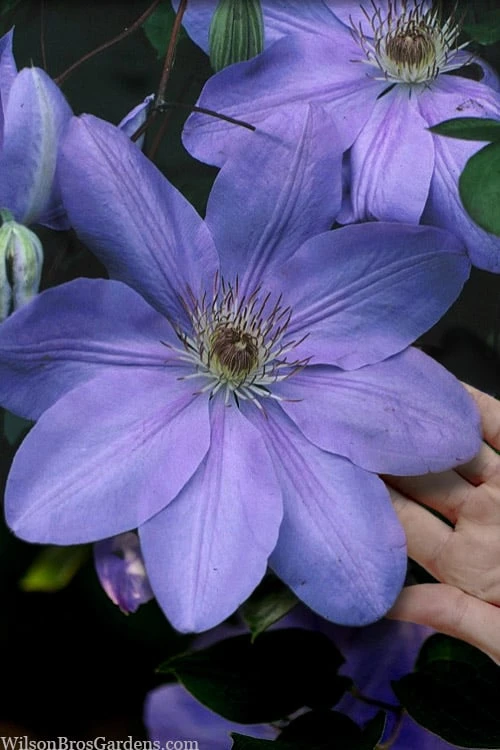
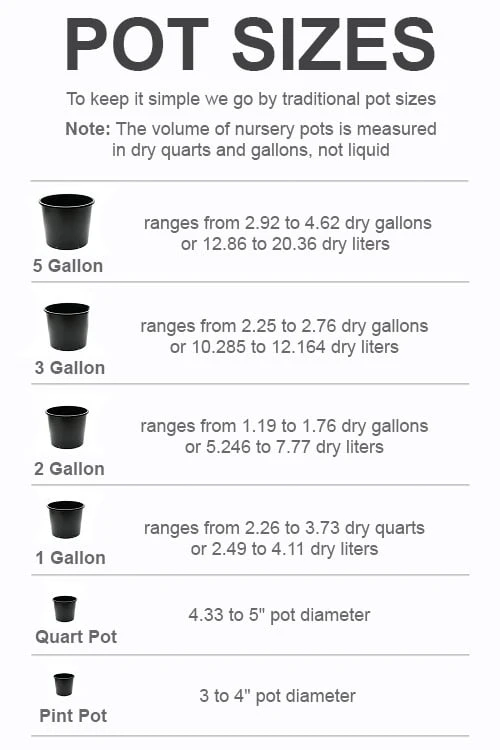
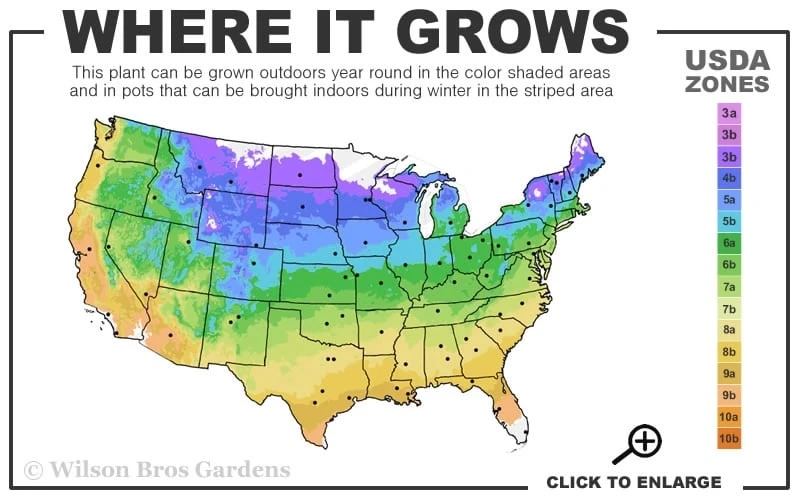





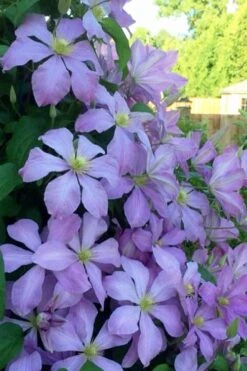





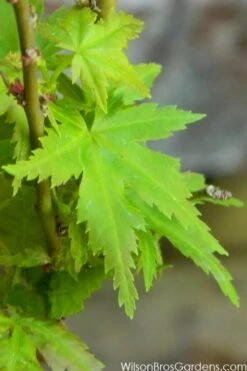
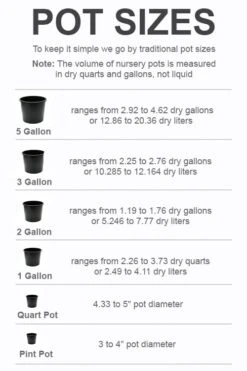


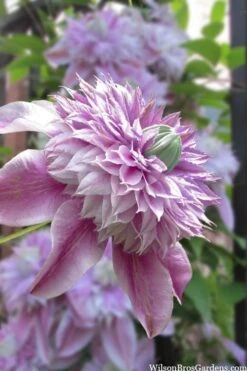


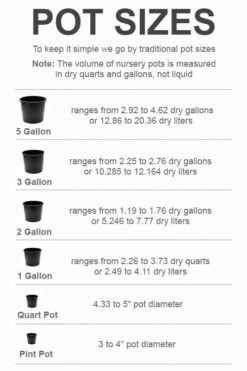
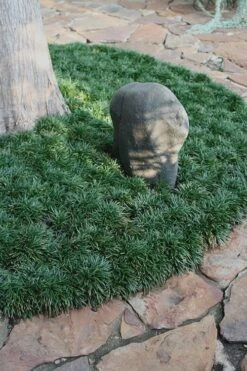
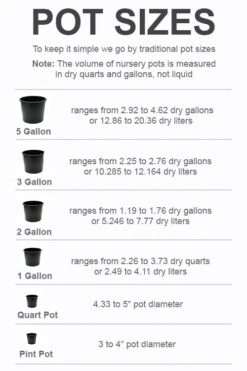

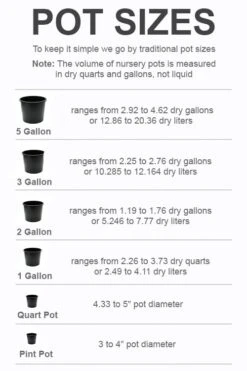
Reviews
There are no reviews yet.